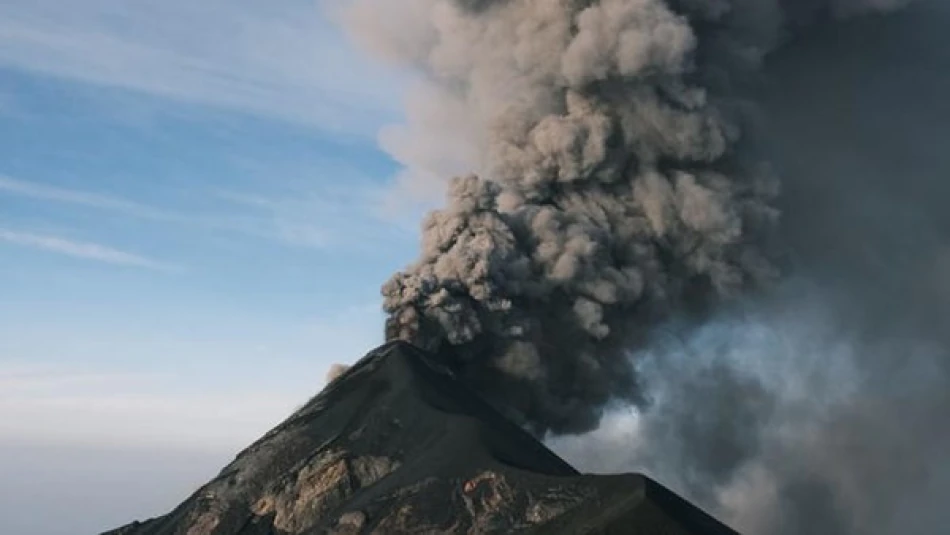
Russia: Kamchatka Earthquake Linked to 600-Year-Old Dormant Volcano Eruption
Russia's 600-Year Dormant Volcano Erupts Following Major Earthquake, Raising Seismic Activity Concerns
The Krasheninnikov volcano in Russia's Kamchatka Peninsula has erupted for the first time in six centuries, sending ash columns 6,000 meters into the sky and potentially signaling a dangerous escalation in regional seismic activity. Scientists believe the eruption may be directly linked to last week's massive earthquake that triggered tsunami warnings across the Pacific, from French Polynesia to Chile.
Historic Awakening After Six Centuries
Olga Girina, head of the volcanic response team in Kamchatka, confirmed this marks the first historically documented eruption of Krasheninnikov volcano in 600 years. The 1,856-meter-high volcano's sudden activation represents a significant geological event that underscores the volatile nature of Russia's Far East region, home to one of the world's most active volcanic zones.
The timing appears far from coincidental. The eruption followed closely on the heels of Wednesday's powerful earthquake, which generated tsunami warnings across vast distances of the Pacific Ocean and was subsequently followed by an eruption of the Klyuchevskoy volcano, Kamchatka's most active peak.
Aviation Risks and Regional Impact
Russian emergency services have classified the eruption at the "orange" aviation alert level, indicating substantial risk to aircraft operations. This designation reflects the serious threat volcanic ash poses to jet engines and flight safety, potentially disrupting air traffic across one of the world's busiest polar flight routes connecting Asia and North America.
The ash column's reach to 6,000 meters places it well within commercial aviation altitudes, forcing authorities to closely monitor wind patterns and ash dispersion. Such disruptions could echo the 2010 Eyjafjallajökull eruption in Iceland, which grounded flights across Europe for weeks.
Seismic Domino Effect
The apparent connection between the major earthquake and subsequent volcanic activity highlights the interconnected nature of tectonic forces in the Pacific Ring of Fire. Kamchatka sits at the junction of several tectonic plates, making it one of Earth's most geologically active regions with over 160 volcanoes, 29 of which remain active.
This pattern of earthquake-triggered volcanic activity has precedent. The 2011 Tōhoku earthquake in Japan was followed by increased volcanic activity, and similar correlations have been observed in Chile and Indonesia. The phenomenon occurs when seismic waves alter magma chamber pressures or create new pathways for molten rock to reach the surface.
Broader Implications for Pacific Stability
The awakening of a 600-year dormant volcano raises questions about the stability of other long-quiet volcanic systems around the Pacific Rim. Climate scientists are particularly concerned about potential impacts on regional weather patterns, as major volcanic eruptions can influence atmospheric conditions and temperatures across vast areas.
For Russia, this development adds another layer of complexity to managing its vast and sparsely populated Far East territories. The region's strategic importance for natural resource extraction and its role as a gateway to Arctic shipping routes means any prolonged volcanic activity could have economic ramifications beyond immediate safety concerns.
 Layla Al Mansoori
Layla Al Mansoori







